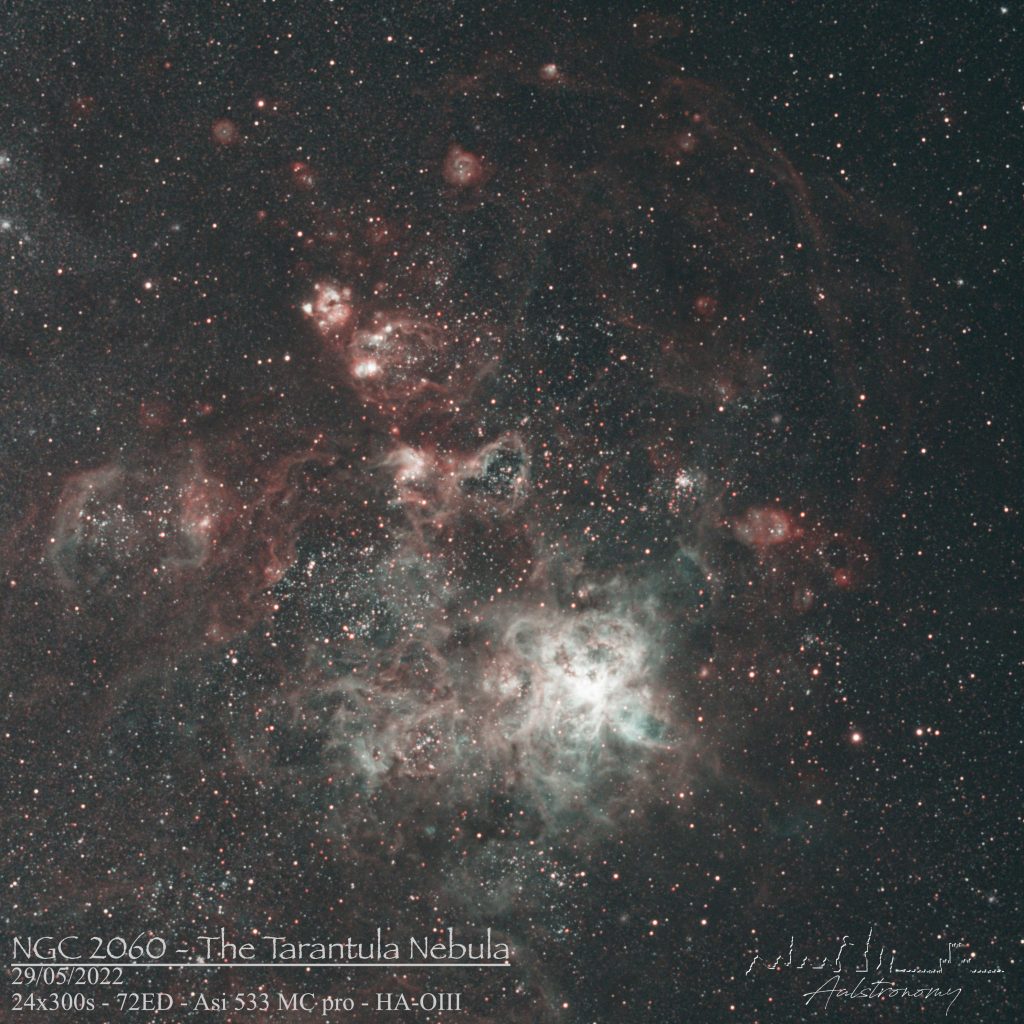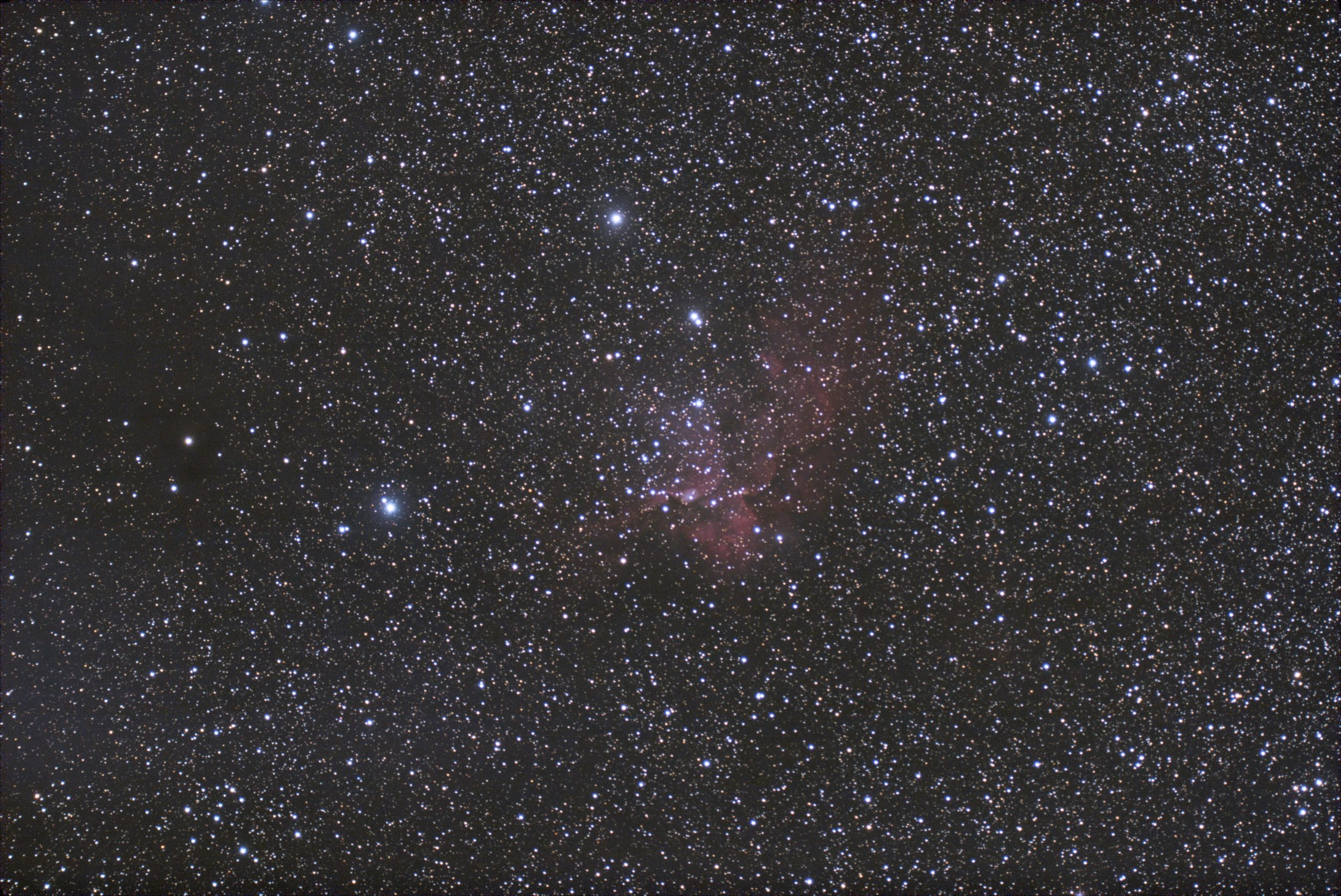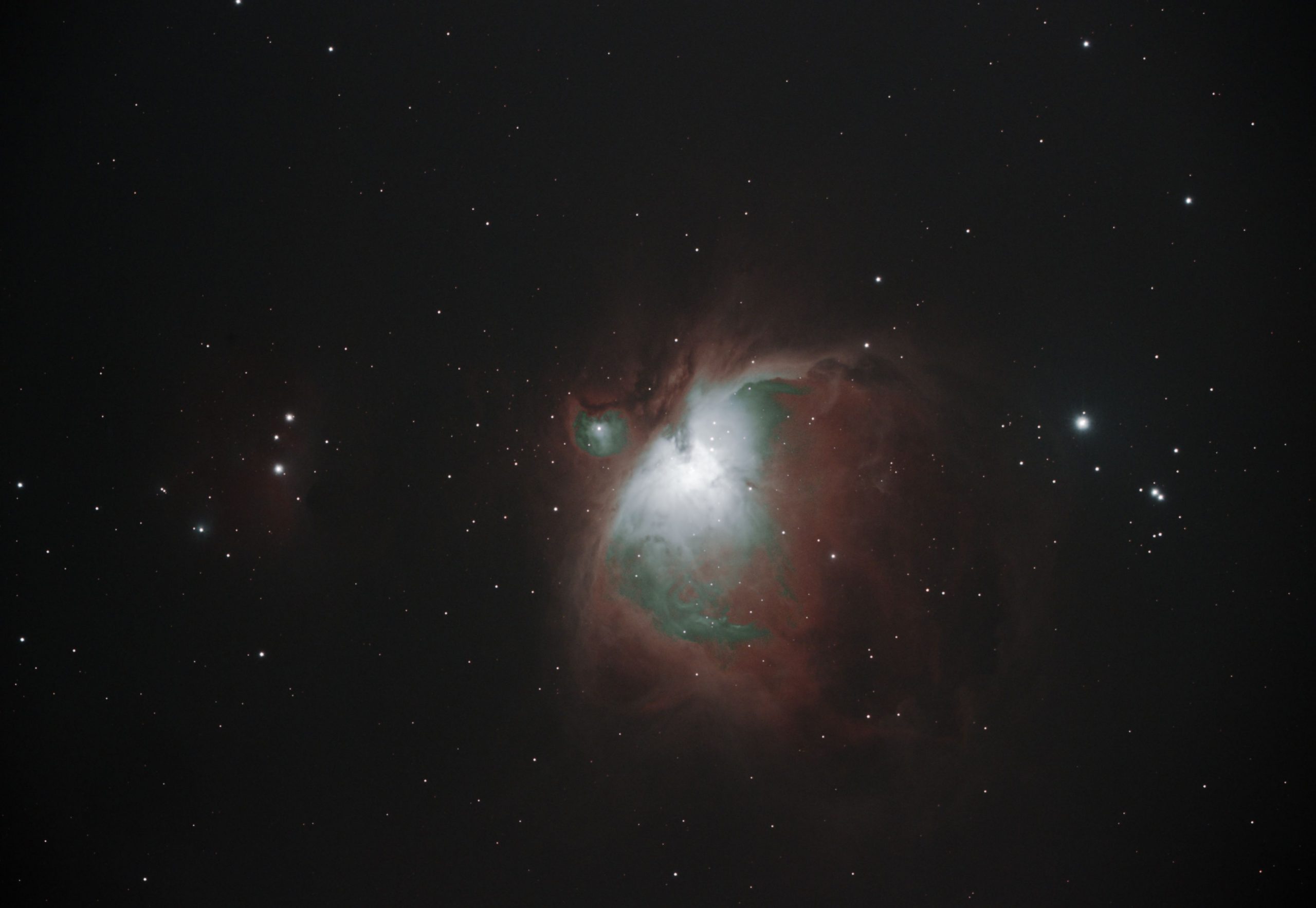Enter the mesmerizing realm of NGC 2060, a celestial spectacle affectionately known as the Tarantula Nebula. Nestled within the Large Magellanic Cloud, this cosmic wonder beckons us to witness the awe-inspiring beauty and dynamic forces that shape the universe.
The Tarantula Nebula, a vibrant region of interstellar gas and dust, derives its nickname from its sprawling and intricate structure that resembles a tarantula spider. This cosmic masterpiece isn’t just a sight to behold; it’s a testament to the universe’s creative dance of matter and energy.
At the core of NGC 2060 lies a hive of stellar activity. Within this bustling stellar nursery, massive clouds of gas and dust coalesce to give birth to new stars. These young stars illuminate their surroundings, casting a luminous glow that showcases the nebula’s ethereal beauty.
But the Tarantula Nebula isn’t merely a region of star birth. It’s a dynamic canvas that hosts some of the most massive stars known to science. These cosmic giants emit intense radiation and stellar winds, sculpting the surrounding nebula and giving rise to its captivating tendrils and filaments.
The Tarantula Nebula, situated within our cosmic neighbor the Large Magellanic Cloud, offers astronomers a front-row seat to the universe’s grand spectacle. It’s a treasure trove of cosmic insights, shedding light on the mechanisms of star formation, stellar evolution, and the interplay of matter and energy.
As you gaze upon NGC 2060, you’re not just observing a distant celestial phenomenon. You’re immersing yourself in the universe’s ongoing story—a tale of creation, transformation, and the dynamic forces that have shaped galaxies, stars, and the very fabric of space and time. The Tarantula Nebula invites us to explore the mysteries that await us in the vast cosmic expanse.









